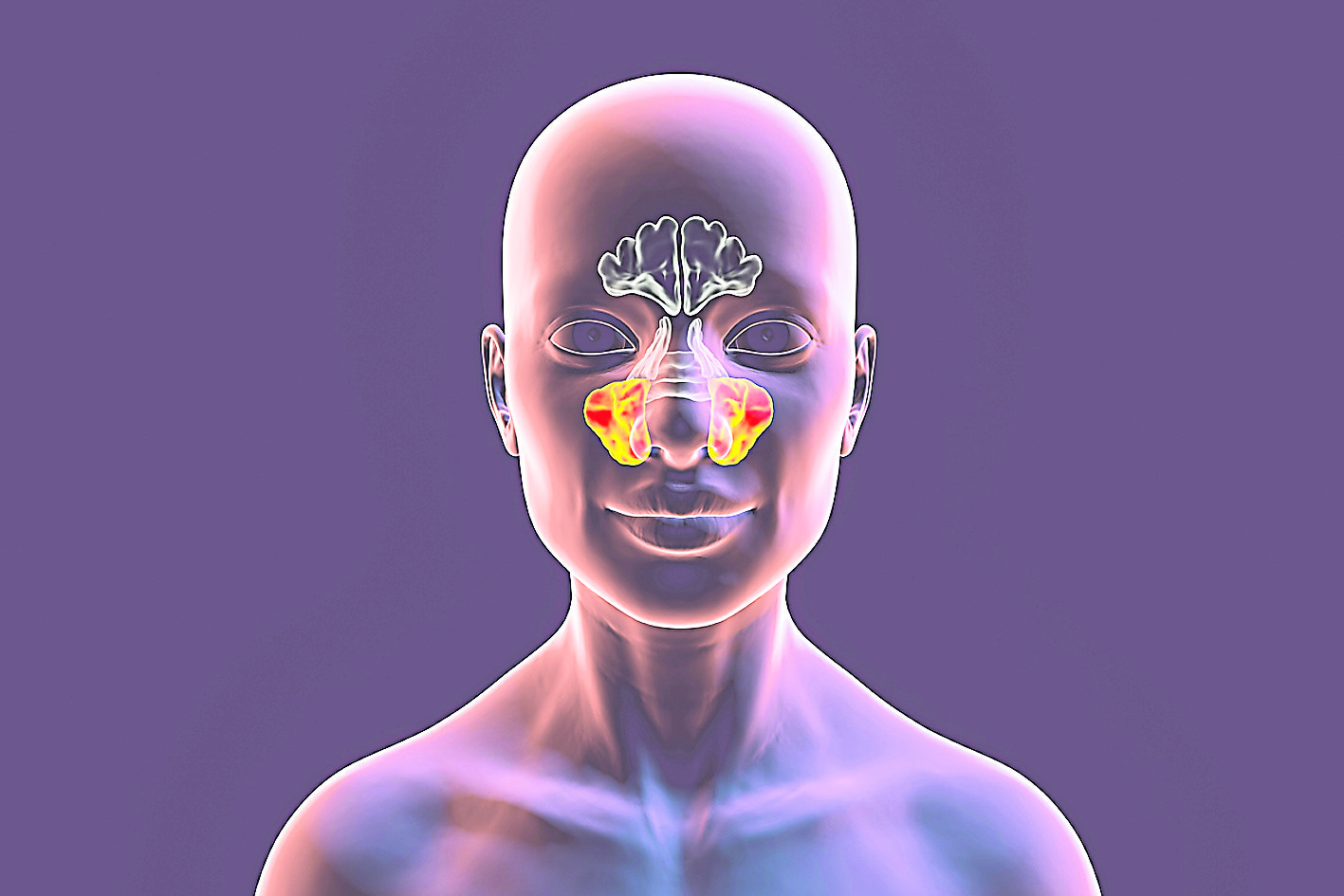【Local medical care】Symptoms are similar to rhinitis, treatment is very different
[ad_1]
Text: Yang Qianni Organizer: Liang Yingxiu
Sinusitis is one of the common diseases of the nose. As the name suggests, it is inflammation and infection of the sinuses, which can cause various nasal cavity and even eye, ear, throat or headache symptoms.
Many people don’t know the difference between sinusitis, allergic rhinitis and cold. Although they all have a runny nose, the treatment methods are completely different!
Dr. Kang Minghan
(Dr Kong Min Han)
(Kuala Lumpur News) The sinuses are the skull cavities surrounding the eye sockets and nasal cavity. Each person has 4 pairs, namely the maxillary sinus below the eyes, the ethmoid sinus between the eyes, and the ethmoid sinus above the eyes. The frontal sinus on the forehead, and the sphenoid sinus on the back of the nose.
The presence of sinuses can reduce the weight of the skull and make our speech sound better.
10% of Malaysians suffer from sinusitis
Dr. Kong Min Han, Consultant of Otorhinolaryngology and Head and Neck Surgery, revealed that sinusitis refers to the inflammation of the epidermis and mucous membrane due to external stimulation of the sinuses. When the sinus mucosa is congested and swollen due to inflammation, the only opening leading to the nasal cavity is blocked, and airflow is also blocked, resulting in sinus pressure.
As sinus cavities hold up secretions or pus, pressure in the sinuses rises, and patients experience facial swelling or pain. Normally, the sinuses should be an air-filled space with no fluid or foreign objects present. This is why patients with nasal congestion or sinusitis will have a hypernasal voice when speaking.
“Sinusitis is one of the common diseases in rhinology.
The global adult prevalence ranges from 6% to 15%.
In Asia, South Korea,
The prevalence rates in China and Singapore were 7%,
8% and 2.7%.
In terms of more than 30 million people in Malaysia,
If 10% of the population suffers from sinusitis,
It is indeed not a small amount. “
Sinusitis is clinically classified according to the duration of the disease, including acute (less than 4 weeks), subacute (4 to 12 weeks) and chronic (more than 12 weeks). In fact, many chronic sinusitis evolve from acute, often because they are not properly addressed or cared for. Once it develops to chronic sinusitis, the effect of drug treatment is not great, and surgical treatment is mainly relied on.
“For ease of management, the Clinical Practice Guidelines (CPG) for sinusitis in adults and adolescents in Malaysia divides sinusitis into acute and chronic with 12 weeks as the boundary. For patients with onset of less than 12 weeks, take drug treatment, if after 12 weeks Surgical treatment can only be considered if there is no relief. It should be noted that if sinusitis complications occur or severe pain occurs, surgical treatment can be considered even if the course of the disease is less than 12 weeks.”
Fluid accumulation in sinusitis causing facial pain
Rhinitis and sinusitis sound similar to the general public, but they are not the same disease, he points out. Rhinitis is medically defined as inflammation of the nose without involving the sinuses. Although some symptoms are similar, when the patient has nasal congestion, nasal itching, sneezing and runny nose, it is mostly rhinitis; when the nose is yellow and thick, and there is facial pain, it is mostly sinusitis.
“Patients experience facial discomfort due to sinus fluid buildup and increased pressure. They often describe the face as ‘heavy’, or as a downward ‘drop’ (sink) when they lower their head. If unsure, You can also try to press the sinuses to see if it causes pain. As for fever, it is not a symptom that can clearly distinguish rhinitis from sinusitis, because acute sinusitis is usually accompanied by fever, but chronic sinusitis is not necessarily.”
Sometimes people with a common cold may have a fever at first, but after 5 or 10 days the fever has subsided but they still have symptoms such as nasal congestion, runny nose, facial pressure or pain, or a bad smell. Rhinitis or sinusitis.
“Sinusitis can also be a complication of unhealed rhinitis. Sinusitis occurs when inflammation of the nasal mucosa spreads through the sinus openings into the sinuses. Allergies and infections (viral, bacterial, or fungal) are common causes of rhinitis and sinus cause of inflammation.”
He also emphasized that, in addition, smoking (including second-hand smoke), gastroesophageal reflux (GERD), air pollution, unhygienic working environment, nasal foreign bodies and previous nasal surgery are all risk factors for sinusitis.
Diagnosis of sinusitis and rhinitis is mainly based on medical history and nasal endoscopy. For rhinitis, abnormal nasal structure and polyps can be ruled out through nasal endoscopy; for sinusitis, yellow pus can be seen from the sinuses.
Diagnosed by nasal endoscopy
“Usually sinusitis can be diagnosed by nasal endoscopy, and computerized tomography (CT) scans are used as diagnostic evidence unless in special circumstances. For chronic sinusitis that requires surgical treatment, CT scans are an important part of preoperative evaluation. tool. Also, magnetic resonance imaging (MRI) is only recommended unless a brain complication is suspected.”
Also, not all patients are advised to undergo allergy testing, as most patients with sinusitis at first presentation develop from the common cold. Unless there is evidence that the sinusitis is caused by allergies, or the patient’s allergic reactions are uncontrolled, tests can be done to try to find the allergen so that it can be prevented in the future.
“At present, there are more than 100 kinds of allergens that can be tested clinically, including dust mites, pets or food, etc. However, for Asian nasal allergies, generally more than 30 kinds of allergens are enough to test.”

Low dose and few side effects steroids to control inflammation
Acute sinusitis is mainly treated with drugs. Although sinusitis is mostly a viral infection, antibiotics are still given to fight bacterial infections.
Doctors may also prescribe decongestants or decongestants, intranasal steroid spray, and saline so that patients can rinse the nasal passages themselves.
Nasal decongestants mainly open up blocked “sinus channels” so that pus can flow out. There are two types of oral and nasal sprays, and Kang Minghan generally recommends the latter.
Steroids can keep inflammation under control. However, many patients are very resistant to steroids when they hear it. In fact, it is the one that can have the best effect in acute sinusitis.
2-year-old children can take long-term steroids
“The dose of steroids used in the treatment of sinusitis is very low, and it acts locally. The body absorbs very little, and the side effects are minimal, so it is very safe. Even children under two years old can use it for a long time, and adults don’t need to worry.”
Some patients will ask if it is not enough to only take antibiotics? Kang Minghan said that try to think of sinusitis as a sink (tangki) with too small opening and clogging. The primary purpose of treatment is to allow fluid to drain smoothly. Taking antibiotics alone is not enough, because it enters the stomach and blood circulation, and can only reach the outside of the “sink”, which has a limited effect; while decongestants combined with steroids can open the “sink” channel and make the fluid more stable. Smooth discharge, faster relief of symptoms.
“Sink” incision to drain pus
Once fluid continues to accumulate and acute sinusitis becomes chronic, the only option is to make an incision in the “sink” and drain the pus through functional endoscopic sinus surgery.
Sometimes, doctors may also perform nasal septum revision surgery or turbinate resection at the same time depending on individual circumstances. “

Unrelated nasal structural abnormalities
Question 1: Do nasal structural problems such as deviated septum and nasal polyps increase the risk of sinusitis?
Answer 1:Many doctors used to believe that structural abnormalities in the nasal cavity increased the risk of developing sinusitis, but studies have shown no strong association between the two because many people with a crooked septum do not develop sinusitis. However, according to clinical observation, there are indeed many sinusitis patients with abnormal nasal structure. Therefore, it can only be said that people with a curved nasal septum are at risk of developing sinusitis, but it does not mean that they will definitely get sinusitis. Nasal polyps are not the cause of sinusitis, but the consequence. Once nasal polyps appear, it belongs to chronic sinusitis.
Therefore, the management of chronic sinusitis can also be divided into two types with and without nasal polyps.
Worried about brain-eye complications
Q2: Can sinusitis cause nasopharyngeal cancer or other serious complications?
Answer 2:There is no evidence that chronic sinusitis causes cancer. Due to the close location, sinusitis is most worrying about the complications of the brain and eyes. The former includes meningitis and brain abscess; the latter has many types, ranging from mild cellulitis to orbital abscess. All can happen, and once there is cavernous sinus thrombosis (cavernous sinus thrombosis), the mortality rate of patients is as high as 40% to 60%.
In addition, when patients with acute sinusitis have underlying medical conditions and low immunity, such as taking steroids, chronic kidney disease, diabetes or AIDS, the risk of complications is higher. Therefore, some cases of acute sinusitis also require surgery as soon as possible, especially for recurrent acute sinuses.
There was once a 50-year-old diabetic patient who worked in a furniture wood factory. When he went to the doctor, acute sinusitis had caused his right eye to swell. After an ophthalmological examination, the medical staff realized that the patient was blind in his left eye. It turned out that he had been seeing with his right eye all along, and now his sinusitis has affected the vision of this right eye.
“In order to avoid blindness in both eyes, we operated on the patient on the same day. Fortunately, the patient recovered in the end, and the vision in the right eye also recovered to 90%.”
[ad_2]
Source link

![[Love Wants Sexual Happiness Series 358]Find the culprit and overcome psychogenic erectile dysfunction. Don’t let pressure affect your sexual happiness.](https://chinathenews.com/wp-content/uploads/2024/04/171111-780x420.jpg)

![[Wanqingyi Care]My health, my rights, customized medical methods in the last stage of life](https://chinathenews.com/wp-content/uploads/2024/04/ZZ1-100-780x420.jpg)
![[Kidney Transplantation Special Topic]The survival rate of transplanted kidneys is high without dialysis treatment three times a week](https://chinathenews.com/wp-content/uploads/2024/04/1311-780x420.jpg)



